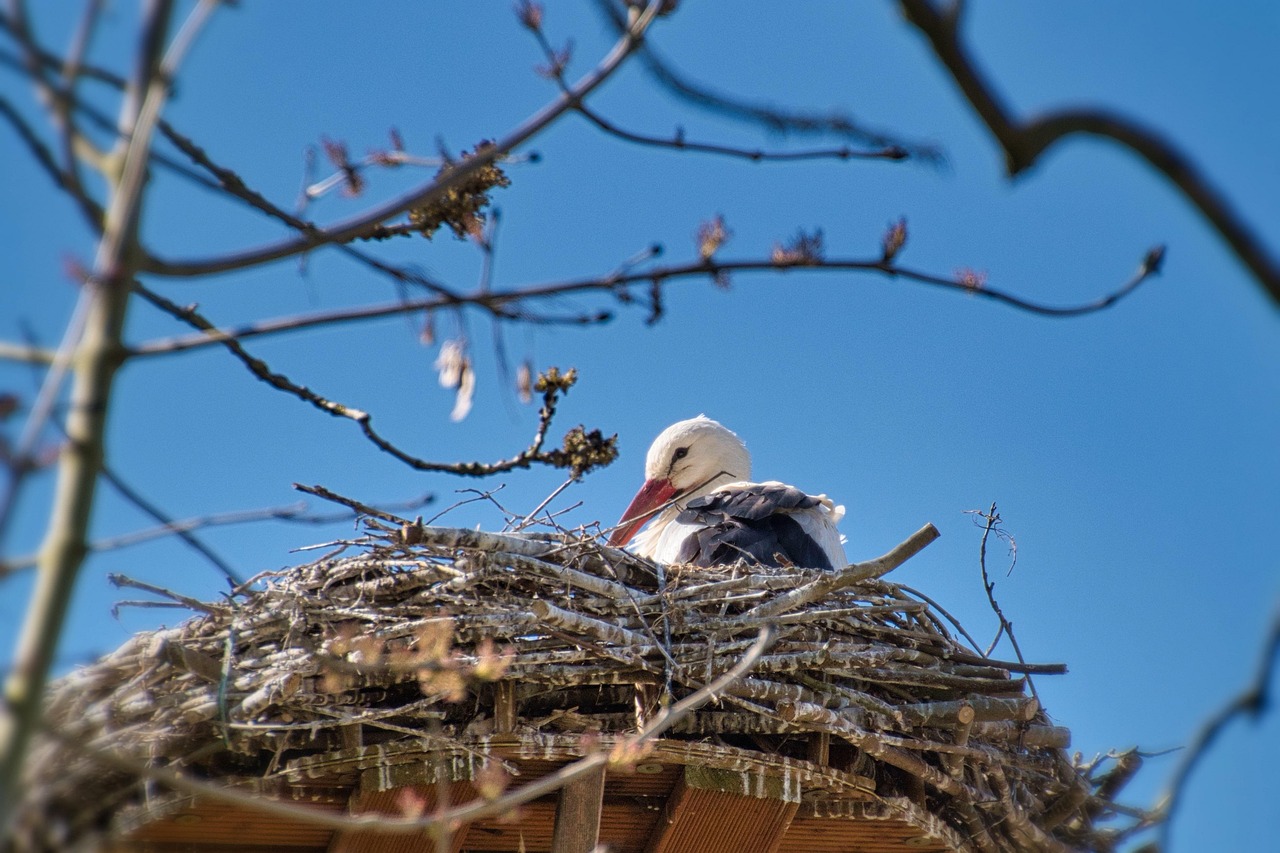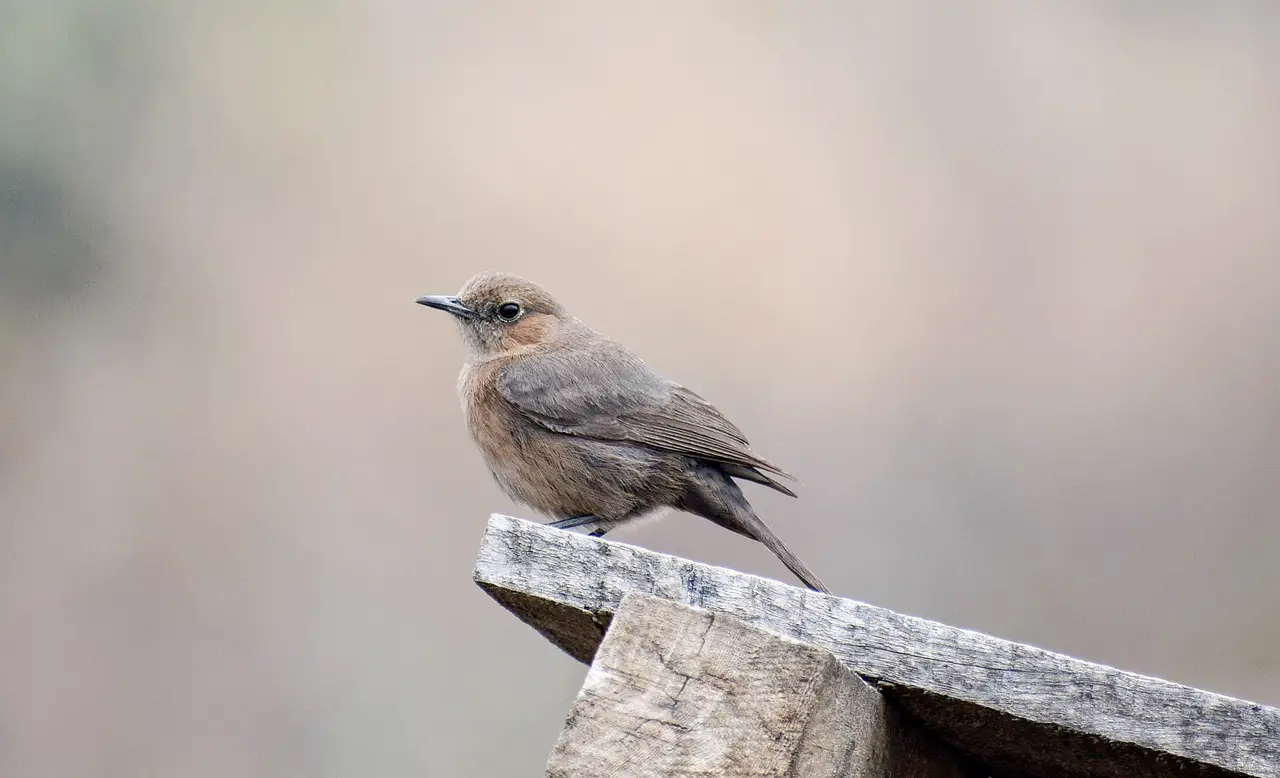Wrens exhibit unique nesting behavior characterized by their intricate nest construction and preference for various nesting sites. They typically build nests in sheltered locations using materials like twigs, grasses, and feathers, demonstrating a remarkable adaptability to different environments.
Understanding Wren Nesting Behavior

Wrens are small, energetic birds found across many regions. Their nesting behavior is particularly fascinating due to their resourcefulness and variety in nest construction. These birds are known for their vocalizations, which play a significant role in establishing territory and attracting mates. The nesting period is crucial for their reproductive success, as it directly influences the survival of their young.
Each species of wren may have slightly different nesting habits, but there are commonalities in their approach to building nests. Wrens typically prefer to nest in areas that provide cover from predators and elements. They often choose sites that are close to water sources or dense vegetation, which offer both safety and abundant food resources.
Nest Construction Techniques
The construction of a wren’s nest is an intricate process that showcases the bird’s ingenuity. Male wrens often take the lead in building nests to attract females. They gather various materials to create a suitable environment for their eggs. The primary components of a wren’s nest include:
- Twigs: These form the basic structure of the nest.
- Grasses: Soft grasses are used to line the interior, providing warmth and comfort.
- Feathers: Often collected from other birds, feathers add insulation.
- Leaves: Fresh leaves can help camouflage the nest.
Wrens are known to build multiple nests, even if they only use one for breeding. This behavior can be interpreted as a strategy to deter predators or other competing birds. The male will often display these nests to attract a mate, showcasing his ability to provide a safe haven for future offspring.
Nesting Sites
The choice of nesting site is critical for wrens. They tend to select spots that offer protection from both physical threats and harsh weather conditions. Common nesting sites include:
- Tree cavities: Wrens often prefer to nest in natural hollows of trees or shrubs.
- Building eaves: Many wrens utilize the sheltered spaces under roofs or porches.
- Dense shrubs: Thick vegetation provides excellent cover from predators.
- Birdhouses: Wrens readily accept human-made nesting boxes, which can mimic natural conditions.
| Nesting Site Type | Description |
|---|---|
| Tree Cavities | Natural hollows in trees provide safety and warmth. |
| Building Eaves | Sheltered areas under roofs protect from weather. |
| Dense Shrubs | Thick foliage offers excellent camouflage from predators. |
| Birdhouses | Man-made structures can provide ideal nesting conditions. |
This adaptability in nesting locations not only enhances their chances of successful breeding but also reflects their evolutionary strategies for survival in diverse habitats. Understanding these behaviors helps in appreciating the ecological role wrens play in their environments.
Nesting Materials and Their Importance
The selection of materials for nest construction is crucial for the survival of wren chicks. Wrens are meticulous in their choices, often opting for a variety of items that can provide insulation, structural integrity, and camouflage. Each material serves a specific purpose in creating a safe and comfortable environment for the eggs and hatchlings.
Common Nesting Materials
Wrens utilize an array of natural materials found in their surroundings. The following list highlights the most common components used in their nests:
- Twigs and Sticks: These form the basic framework and help create structure.
- Grasses: Soft grasses are typically used for lining the nest, providing comfort and warmth.
- Feathers: Wrens often incorporate feathers from other birds, which add insulation.
- Leaves: Fresh leaves can serve as both camouflage and additional insulation.
- Spider Silk: This is sometimes used to bind materials together, enhancing the nest’s durability.
By combining these materials, wrens construct nests that are not only functional but also well-adapted to their environment. The choice of materials can vary based on local availability and climate conditions, showcasing their adaptability.
Wren Nesting Behavior Throughout the Seasons
Nesting behavior in wrens changes with the seasons. Understanding these seasonal patterns is vital for appreciating their life cycle and reproductive strategies. Wrens typically follow a consistent breeding schedule, which is influenced by factors such as temperature, food availability, and daylight hours.
Spring: Nest Building
As spring arrives, male wrens begin to establish their territories. They engage in vocal displays to attract females and defend their chosen nesting sites. During this time, males will:
- Gather nesting materials to start building.
- Create multiple nests to entice potential mates.
- Vocalize frequently to assert dominance over their territory.
This period is marked by intense activity as males compete for the attention of females, showcasing their building skills and territorial prowess.
Summer: Egg Laying and Rearing Chicks
Once a female selects a mate, she assesses the nests built by the male. After choosing a suitable nest, she lays her eggs, usually between 4 to 7 eggs per clutch. The female takes on primary incubation duties while the male provides food. Key behaviors during this phase include:
- The female incubating the eggs for 12 to 16 days until they hatch.
- The male bringing food such as insects and seeds to feed the female and later the chicks.
- The parents working together to protect the nest from predators.
This cooperative breeding behavior enhances the survival rate of the chicks, as both parents are actively involved in their care.
Fall: Post-Nesting Behavior
As summer transitions into fall, wrens begin to focus on survival rather than reproduction. After raising their young, they often leave their nesting sites. During this period, wrens display different behaviors:
- The young wrens may stay with their parents for some time before becoming independent.
- Wrens start to flock together for foraging as food becomes scarcer.
- Nesting sites may be abandoned as they prepare for migration or winter roosting.
This shift in behavior highlights the adaptability of wrens as they respond to changing environmental conditions and resource availability.
The Role of Predators in Nesting Success
Predation is a significant factor influencing wren nesting success. Various animals pose threats to wren nests and chicks. Understanding these predatory pressures can shed light on wren behavior and nesting strategies.
Main Predators of Wrens
Some common predators include:
- Squirrels: These can raid nests to consume eggs or young chicks.
- Snakes: Many snakes are adept at climbing trees and shrubs to reach nests.
- Raccoons: Known for their dexterity, raccoons can access nests in various locations.
- Bigger Birds: Raptors or larger birds may prey on adult wrens or their chicks.
To mitigate these risks, wrens employ various strategies such as selecting less accessible nesting sites and constructing nests that blend into their surroundings. These adaptations contribute to their overall survival amidst predation pressures.

Impact of Environmental Factors on Nesting

Environmental factors play a critical role in the nesting behavior and success of wrens. These factors can influence everything from the timing of nesting to the choice of materials and sites. Understanding how these elements affect wrens can provide insight into their adaptive strategies.
Weather Conditions
Weather conditions significantly influence the nesting cycle of wrens. Temperature, precipitation, and seasonal changes can all have an impact. Key effects include:
- Temperature: Warmer temperatures can lead to earlier nesting times, while colder conditions may delay breeding.
- Rainfall: Excessive rain can wash away nests or make materials difficult to gather, impacting nest construction.
- Wind: Strong winds can damage nests, especially if they are not securely anchored.
Wrens are known to adapt to these weather-related challenges. For instance, they may choose more sheltered sites during rainy seasons or adjust the timing of their nesting based on temperature fluctuations.
Availability of Food Resources
The availability of food is another crucial factor affecting wren nesting behavior. Wrens primarily feed on insects, seeds, and small invertebrates. The following points illustrate how food resources impact their nesting:
- Insect Abundance: A plentiful supply of insects during the breeding season is essential for feeding both adult wrens and their chicks.
- Seasonal Variation: The abundance of food can fluctuate seasonally, affecting the timing of egg-laying and chick rearing.
- Foraging Behavior: Wrens may alter their foraging habits based on food availability, impacting their energy levels during nesting.
This reliance on food resources underscores the importance of healthy ecosystems for supporting wren populations. Conservation efforts aimed at preserving natural habitats can help ensure that wrens have access to adequate food sources during critical periods.
Human Influence on Wren Nesting
Human activities can significantly impact wren nesting behavior and success. From urban development to gardening practices, various factors play a role in shaping the environments where wrens thrive.
Habitat Modification
Urbanization and agricultural practices often lead to habitat loss and fragmentation. Some specific impacts include:
- Loss of Natural Cover: The removal of trees and shrubs reduces nesting opportunities and shelter from predators.
- Pesticide Use: Chemicals can diminish insect populations, directly affecting the food supply for wrens.
- Pollution: Contaminated environments can harm both the birds and their food sources.
Despite these challenges, some wrens adapt well to urban environments. They may use man-made structures for nesting or find food in gardens. This adaptability highlights their resilience in changing landscapes.
Providing Nesting Opportunities
Creating bird-friendly environments can support wren populations. Homeowners and communities can take specific actions to encourage wren nesting:
- Install Birdhouses: Properly designed birdhouses can provide safe nesting sites for wrens in urban areas.
- Plant Native Vegetation: Native plants can attract insects and provide natural cover for nesting.
- Avoid Pesticides: Reducing or eliminating pesticide use helps maintain healthy insect populations.
These initiatives not only benefit wrens but also contribute to greater biodiversity in local ecosystems.
Nesting Behavior Variations Among Different Wren Species

While many aspects of nesting behavior are similar across wren species, there are notable differences that reflect their adaptations to specific environments. Understanding these variations can enhance our appreciation of these birds.
Species-Specific Nesting Habits
Different species of wrens exhibit unique behaviors and preferences when it comes to nesting:
- Eurasian Wren: This species often builds its nest in dense foliage or tree cavities, using a variety of materials to ensure warmth.
- Carolina Wren: Known for its adaptability, the Carolina wren often nests in human structures like sheds or under eaves, showcasing its comfort in urban settings.
- Cactus Wren: This species prefers arid environments and builds nests in cacti or thorny shrubs, utilizing available materials that provide protection from predators.
The diversity in nesting behaviors among wren species illustrates their adaptability to different ecological niches and environmental challenges. Each species has developed strategies that enhance its chances of successful reproduction within its specific habitat.
Adaptation to Changing Environments
As climate change and habitat destruction continue to alter natural landscapes, the adaptability of wrens becomes increasingly important. These birds demonstrate resilience and flexibility in their nesting behaviors, which can help them cope with changing environmental conditions. Researchers have observed various adaptations in wren species that allow them to thrive despite challenges.
Behavioral Adaptations
Wrens exhibit several behavioral adaptations that enhance their chances of survival:
- Flexible Nesting Locations: Many species are willing to explore new nesting sites, including urban and suburban areas, which can provide alternative habitats when traditional sites are compromised.
- Increased Nesting Attempts: In years with particularly high predation or adverse weather conditions, some wrens may attempt multiple nesting cycles, improving their chances of successful breeding.
- Altered Feeding Strategies: Wrens may change their foraging habits based on food availability, seeking out new insect sources or adapting their diet when necessary.
These behavioral adaptations highlight the wren’s ability to respond to environmental stressors. By modifying their nesting and foraging behaviors, they can maintain stable populations even in fluctuating conditions.
Conservation Efforts and Their Importance
As human activities continue to impact natural habitats, conservation efforts become crucial for the survival of wren populations. Addressing habitat loss and environmental degradation is vital for ensuring that these birds can continue their unique nesting behaviors. Key conservation strategies include:
- Habitat Restoration: Restoring native vegetation and creating wildlife corridors can help provide safe nesting sites and food sources for wrens.
- Public Awareness: Educating communities about the importance of preserving natural habitats can foster greater support for conservation initiatives.
- Nesting Box Programs: Encouraging the installation of birdhouses can offer safe nesting options in urban areas where natural sites are limited.
Through targeted conservation efforts, we can help protect wren populations and their habitats, ensuring these fascinating birds continue to thrive in diverse environments.
Final Thoughts
The nesting behavior of wrens is a remarkable example of nature’s adaptability. From the intricacies of nest construction to their choice of sites, wrens display a unique blend of creativity and resourcefulness that enables them to thrive in various environments. Their ability to adjust to changing conditions further emphasizes their resilience.
Understanding wren nesting behavior not only highlights the ecological roles these birds play but also underscores the importance of preserving their habitats. As stewards of the environment, our actions can significantly impact the survival of these small but vital creatures. By fostering awareness and implementing conservation strategies, we can ensure that wrens continue to enchant future generations with their charming songs and intricate nests.
In conclusion, the study of wren nesting behavior reveals much about their adaptability, ecological significance, and the challenges they face in a rapidly changing world. It serves as a reminder of the intricate connections within ecosystems and the responsibility we share in protecting our natural world.
